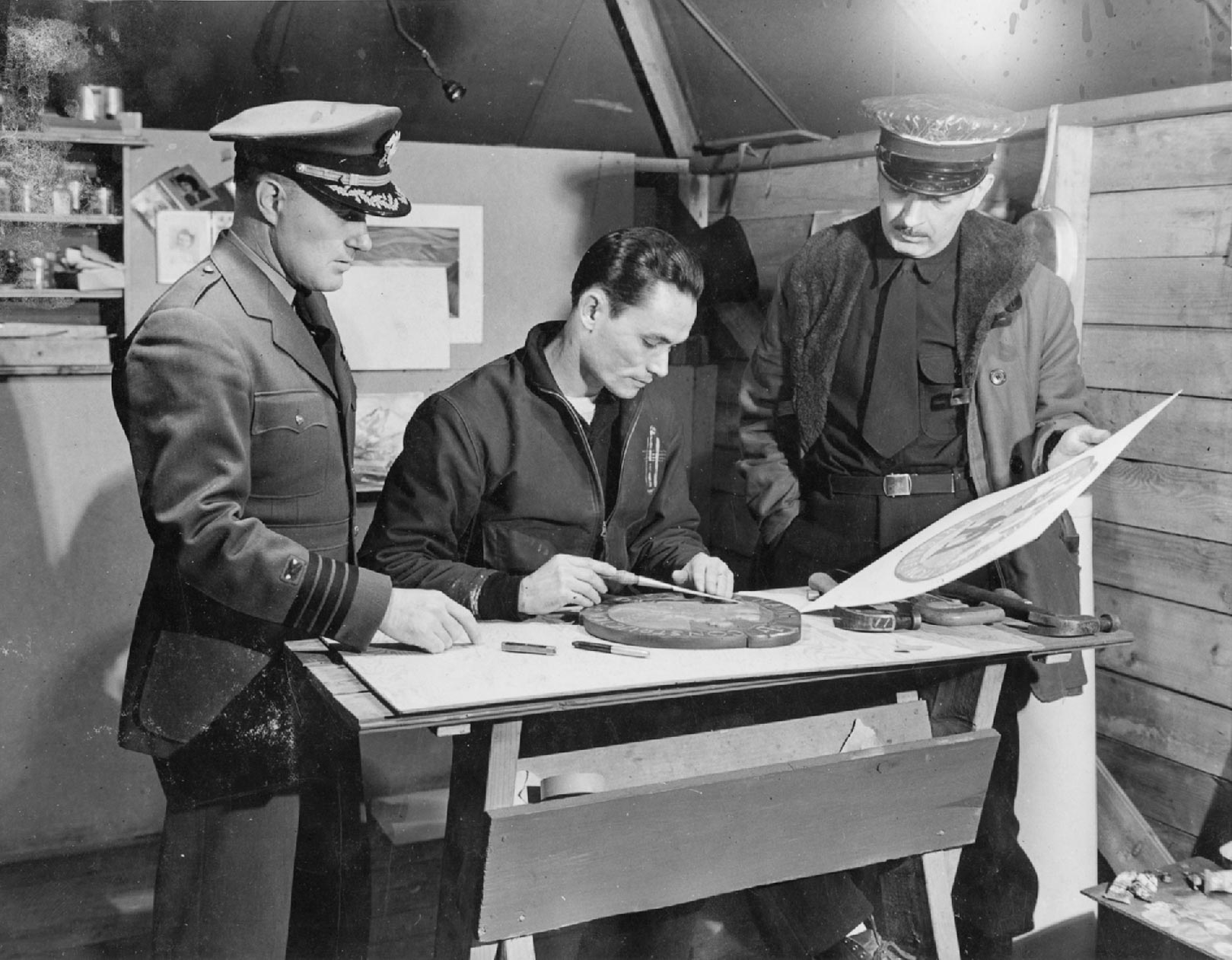Be part of the conversation: azarchitecture/Jarson & Jarson Architecture blog covers architecture and civic topics that comment on what’s happening in the Valley’s diverse design community. Here’s what’s happening now:

Kiva Crafts Center: Then and Now – Part One
‘It was the . . . catalyst for Scottsdale as a nationally-known resort center with fine art galleries, Indian arts & crafts and specialty shops . . .’ –Lloyd Kiva New (The Sound of Drums)
In 1946, Lloyd Kiva New (1916–2002), a Cherokee/Scots-Irish Oklahoman, returned to Phoenix from the war, including “hellish days and nights at Iwo Jima” as a Navy officer aboard the USS Sanborn. A graduate of the Art Institute of Chicago, he had worked before the war at the Phoenix Indian Boarding School, managed by the Bureau of Indian Affairs (BIA).
Lloyd Kiva was cruising east to Scottsdale, thinking of “islands, oceans and ships,” but he also wanted “to hug the trees, the rocks, the mountains and to feel the sky I used to know,” he wrote in his memoir, A Sound of Drums, which vividly relates his quest for authenticity as a Native American in an assimilationist environment (Santa Fe: Sunstone Press, 2016, p. 136 ff).
Ahead was what appeared to him as a “Hollywood ghost town.” In the middle of the “village” was Scottsdale Road, which was “paved for a few miles to the north and then turned to gravel before rolling out through greasewood, Saguaro cactus, and monumental boulders for some twenty-five miles to its beginnings in a small group of houses and stores called Cave Creek.” (p. 142).
In town, Lloyd Kiva serendipitously met some pre-war artist friends, including painters Lew Davis and Phillip Curtis. Soon after, in February 1946, he joined the Arizona Craftsmen demonstration studio on the southwest corner of Brown and Main streets, sponsored by businessman and developer Tom Darlington, who later founded Carefree; four years later, in April 1950, that wood building burned.
Inspired by his vision of marketing premiere Native American handmade wares, he followed in September 1950 with the Arizona Crafts Center, featuring wearable art, in the undeveloped Fifth Avenue area north of town. Finally, he built Craftsman Court, also called Kiva Craft Center, in phases from 1955 to 1958 on the southeast corner of 5th Avenue and Craftsman Court.
Listed on the Scottsdale Historic Register on July 1, 2002, Craftsman Court pioneered a pedestrian-friendly retail environment in Scottsdale with its seven one- and two-story shops surrounding a shaded courtyard with a reflecting pool. The city uses the Historic Register, established in July 1999, to identify, designate and promote its historic buildings.
In designing the center, architect Thomas Stuart ‘T.S.’ Montgomery (1917–1970) combined western and contemporary styles and sun-withstanding materials.
Lloyd Kiva’s shops, including his Studio 10, helped Scottsdale develop as an arts colony and established the Indian crafts movement in the young city. An artist and leather craftsman, he employed, inspired and mentored Native Americans such as Hopi artists, Charles and Otellie Loloma, who made pottery; Charles (1921–1991) later crafted the jewelry he is now particularly remembered for.
“Lloyd Kiva New’s legacy is, above all, the empowerment of Native American artists, to encourage pride in who they are and express themselves as individuals and in their communities,” says Ryan S. Flahive, archivist at the Institute of American Indian Arts (IAIA) in Santa Fe, which Lloyd Kiva helped found in 1961.
Flahive, who also edited The Sound of Drums, adds that just prior, Lloyd Kiva was the keynote speaker at the Rockefeller Project in Tucson 1958 to 1961, whose goal was to revivify American Indian art.
An innovative promoter, Lloyd Kiva oversaw the design and creation of stylish high-quality handbags, dresses and other goods that found enthusiastic markets in department stores such as Goldwater’s in Phoenix and the homes of well-to-do customers in the Valley and nationwide.
His tenants were also artisans, including Glass Art Studios, which pioneered large pieces of glass in cement; its stained glass can still be seen on walls at Kiva Craft Center. Erne’ Wittels was a custom perfumer, and fashion artist Leona Caldwell was prominent in the Scottsdale modern crafts movement. Others were acrylics specialist, Dick Seeger Gallery; jeweler Fred Skaggs; leather craftsman, Lord Latigo; silversmith Wesley Segner, one of the original Arizona Craftsmen; and El Chango Loco, an arts and crafts store.
More diversely mixed today, the six-decade-old Kiva Craft Center houses one of two Kactus Jock stores in Old Town Scottsdale, Estate Watch & Jewelry, Leela Market, Accentuated by Diana, BS West, Elizabeth’s LPG Endermo Center Spa and FnB restaurant in the original Glass Arts Studio building.
The Simonson family of Scottsdale, today as Sunbrella Properties Ltd., have owned the center for almost 50 years, acquiring it in April 1972 from Lloyd Kiva New’s wife. “My late brother Richard and I represent second-generation ownership, very soon transitioning to third generation,” says Michael Simonson, a University of Arizona graduate, tax attorney and former municipal judge who is teaching the business to his son, Paul.
“Kiva Craft Center is so approachable and still in use; kudos to the owners for leaving it pretty much untouched,” recalls Scott Jarson, who with wife Debbie is celebrating 30 years of azarchitecture Jarson & Jarson Real Estate, Scottsdale, which specializes in the sale and purchase of historic properties. “I think that’s the greatest compliment, that now, all these many years later, there’s still a creative draw to the place.”
Brown is a Valley-based freelancer (azwriter.com). This is the second in an ongoing series celebrating “Our Visual Wealth.” His article on the Kiva Craft Center was released over three segments, the second and third can be located here and here.
He thanks the many city of Scottsdale employees who assisted, the Institute of American Indian Art in Santa Fe and other resources. The updated Scottsdale downtown plan is here.



